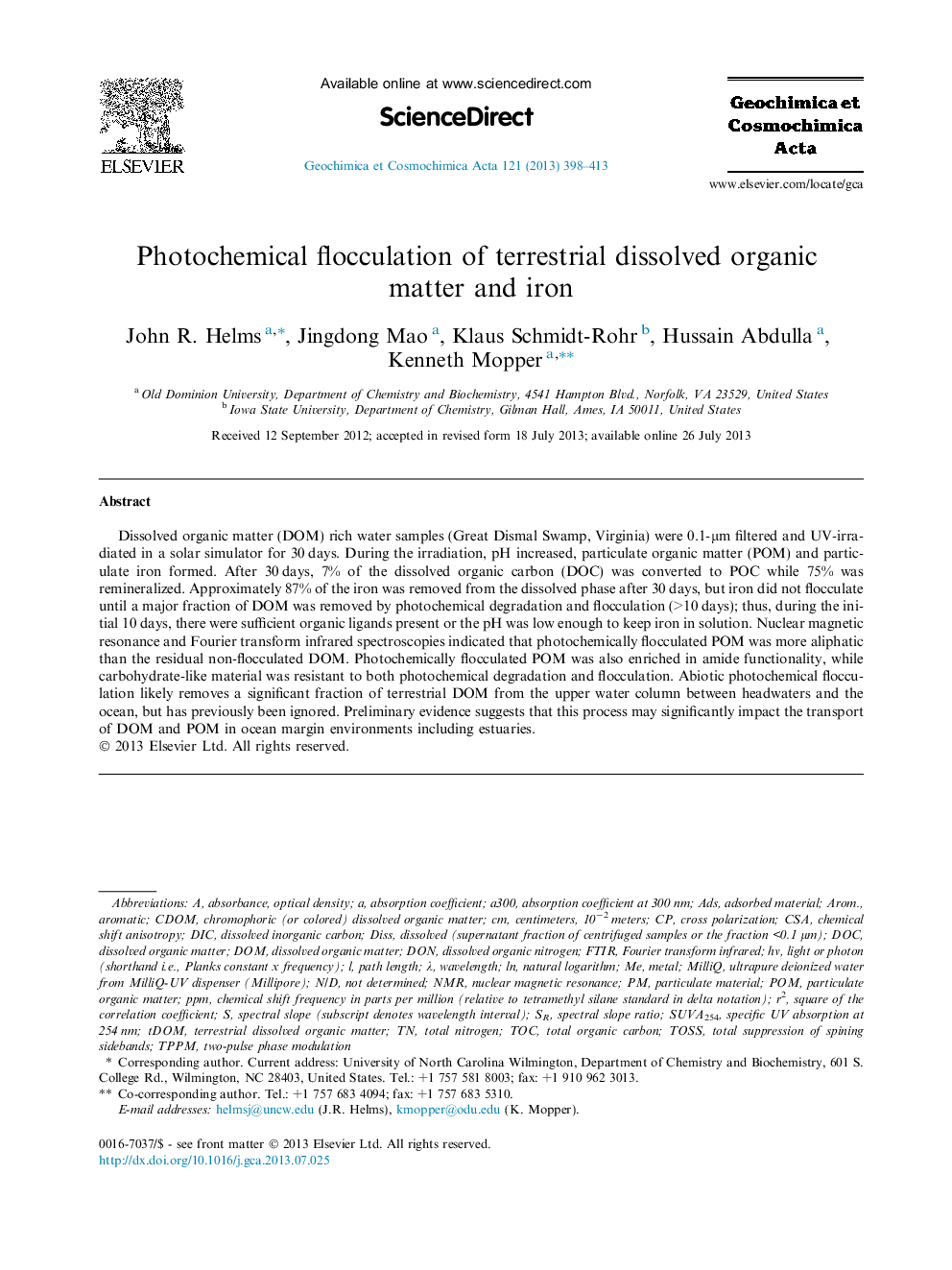| Article ID | Journal | Published Year | Pages | File Type |
|---|---|---|---|---|
| 6438925 | Geochimica et Cosmochimica Acta | 2013 | 16 Pages |
Abstract
Dissolved organic matter (DOM) rich water samples (Great Dismal Swamp, Virginia) were 0.1-μm filtered and UV-irradiated in a solar simulator for 30 days. During the irradiation, pH increased, particulate organic matter (POM) and particulate iron formed. After 30 days, 7% of the dissolved organic carbon (DOC) was converted to POC while 75% was remineralized. Approximately 87% of the iron was removed from the dissolved phase after 30 days, but iron did not flocculate until a major fraction of DOM was removed by photochemical degradation and flocculation (>10 days); thus, during the initial 10 days, there were sufficient organic ligands present or the pH was low enough to keep iron in solution. Nuclear magnetic resonance and Fourier transform infrared spectroscopies indicated that photochemically flocculated POM was more aliphatic than the residual non-flocculated DOM. Photochemically flocculated POM was also enriched in amide functionality, while carbohydrate-like material was resistant to both photochemical degradation and flocculation. Abiotic photochemical flocculation likely removes a significant fraction of terrestrial DOM from the upper water column between headwaters and the ocean, but has previously been ignored. Preliminary evidence suggests that this process may significantly impact the transport of DOM and POM in ocean margin environments including estuaries.
Keywords
Related Topics
Physical Sciences and Engineering
Earth and Planetary Sciences
Geochemistry and Petrology
Authors
John R. Helms, Jingdong Mao, Klaus Schmidt-Rohr, Hussain Abdulla, Kenneth Mopper,
